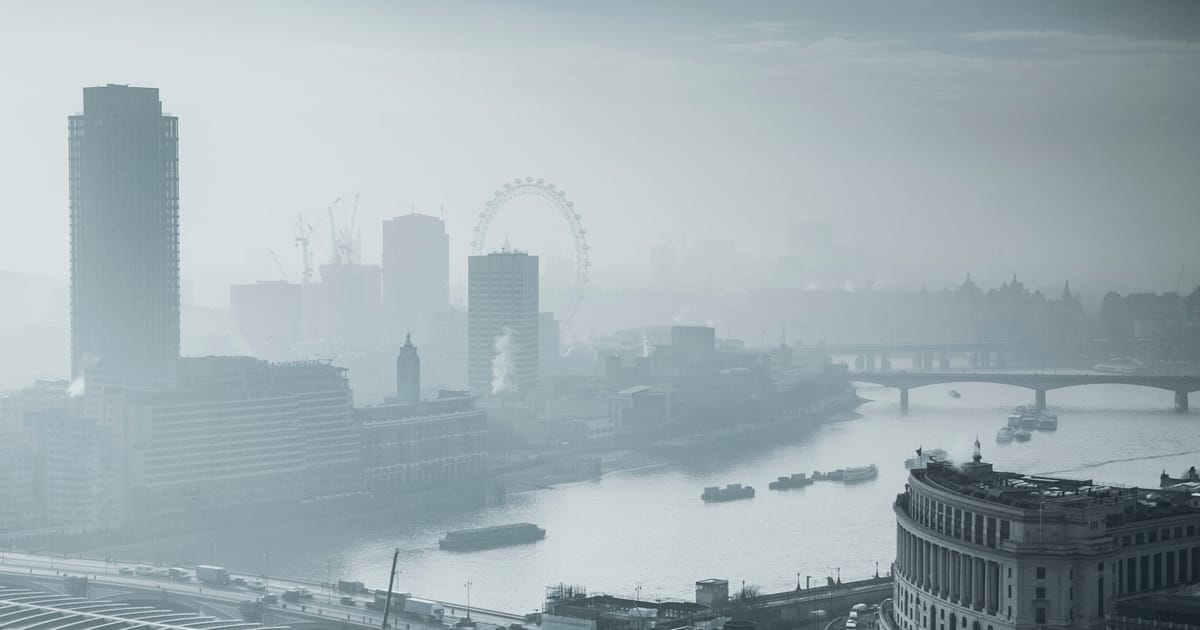This article is part of POLITICO’s Global Policy Lab: Living Cities, a collaborative journalism project exploring the future of cities. Sign up here.
LONDON — With energy prices skyrocketing, many Europeans have switched to wood-burning stoves to save on their heating bills — but that’s hampering efforts to curb air pollution, particularly in cities.
Despite its cozy, natural and green image as an alternative to fossil fuels, burning wood — and the emissions it creates — has serious health consequences. Smoke from wood-burning stoves contains fine particulate matter and other dangerous substances like carbon monoxide; in cities, these mix with pollution from traffic to form a lethal combination, exacerbating the risks of asthma and heart failure.
That’s putting cities across Europe in a bind, as they’ve committed to ambitious targets to go climate-neutral and significantly lower pollution. And instead of moving away from wood burning, high energy prices caused by the Ukraine war have prompted many households to adopt the form of heating.
The problem is acute in London, where smoke from wood-burning stoves adds to the already high levels of vehicle pollution, causing severe pollution hot spots.
With emissions on the rise, Mayor Sadiq Khan earlier this month unveiled new planning guidance that requires zero particulate emissions for new and refurbished developments, effectively banning the installation of wood-burning stoves in these developments.
The move is seen as an “example of how you can kind of do a step change to essentially banning them” in new developments, said Tessa Bartholomew-Good, campaign lead at Global Action Plan, an environmental NGO.
But it’s also sparked a call for broader action, including from Rosamund Kissi-Debrah, mother of nine-year-old Ella, the first person whose death from an asthma attack was officially linked to air pollution. She lived in a pollution hot spot.
Kissi-Debrah has called for a complete ban on the use of wood-burning stoves in the capital, arguing that while they might make sense in other parts of the country, they’re worsening the city’s already desperate air quality.
London is not alone in looking for ways to curb wood-burning stoves, with cities across Europe wrestling with similar trends and campaigners lamenting that the energy crisis has undone years-long efforts to convince people to ditch firewood.
It’s as if the last decade of progress was “lost within a year,” said Kåre Press-Kristensen, senior adviser on air quality and climate at the NGO Green Transition Denmark. “It’s kind of back to the Stone Age campfire — just in our living room.”
Trial and error
Precise figures on the increase in wood burning in cities are difficult to come by, but the cumulative evidence points to a dramatic increase.
The U.K. government on Tuesday released new data showing that particulate matter pollution from wood burning in homes has doubled over the past decade. Data from the country’s Stove Industry Association showed a 66 percent increase in stove sales between July and September compared to the same period in 2021.
Austria’s demand for chimney sweeps increased by a factor of four to five, according to the Federal Guild Master of Chimney Sweeps. In Germany, official statistics from December show that prices for firewood, wood pellets or other solid fuels increased by 96 percent in November 2022, compared to the same month the previous year.
Researchers warn that the increase will be costly — both in terms of health impacts and public expenses.
The fine particulate matter, PM 2.5, released by wood burning has been shown to “flood” the home and impact on the community when released into the air outside.
Data from consultancy CE Delft found the health-related costs of outdoor air pollution caused by wood-burning stoves comes in at nearly €9 billion in the EU and U.K. The cost is particularly high in some countries such as Italy, where wood-burning stoves make up 75 percent of the total health costs of pollution from domestic heating and cooking.
The report calculated that using a wood-burning stove leads to some €750 in annual health costs from pollution per household — compared to €210 for a diesel car.
With full-on bans out of reach in most cities, policymakers’ options for curtailing the use of wood-burning stoves are limited.
“Currently, there are no legal grounds to ban wood burning completely,” said Eva Oosters, vice mayor for environment and emissions-free transport in the Dutch city of Utrecht. Instead, the city is focused on trying to “encourage people to choose a healthier and cleaner environment.”
In 2022, it implemented a subsidy for people to remove or replace their stove with a less polluting one. The scheme proved popular, but the city decided to scrap it after research showed a similar program in Norway was ineffective. Emissions levels remained high, potentially because people used the new stoves more frequently than the old ones.
Oslo, too, has switched its approach and is now spending more resources on longer-term measures aimed at lowering energy use and making alternative energy sources more affordable.
“We are giving grants to improve energy efficiency in buildings, and we have district heating systems over large portions of the city — that is how you give people real [alternatives] to wood burning,” said Oslo’s Vice Mayor for Environment and Transport Sirin Stav.
For EU cities, there’s an additional hurdle.
Patrick Huth, senior expert at Environmental Action Germany, said discussions in Berlin around setting stricter requirements for wood-burning stoves come up against an awkward fact: Despite the additional pollution, Germany is still meeting the air quality limit values for particulate matter set by the EU.
“This is a huge problem, because if the air quality limit values are met, then there’s no pressure on cities to do more to make stricter emission limit values or to implement bans for this kind of pollution source,” he said.
Brussels has proposed tightening the bloc’s air quality guidelines but the new limits are still twice as high as the latest recommendations from the World Health Organization.
Behavior change
Adding to the challenge for cities is a lack of awareness about the health impacts associated with wood burning. Most people don’t realize their stoves are dangerous to the health of their families and neighborhoods — and don’t enjoy being lectured.
“Educating people about the links between wood burning, air pollution and health — without judgment — is an essential step toward behavior change, regulation and supporting a transition to other energy sources for those who need it,” said Rachel Pidgeon from Impact on Urban Health, a nonprofit that helps cities tackle issues like air pollution.
But cities that launch information and behavior change campaigns face a tough audience, especially when discussing potential bans on wood burning in densely populated areas.
In Norway, people have reacted “very negatively to our claims,” said Susana Lopez-Aparicio, the lead scientist on the Norwegian Institute for Air Research’s report. “[Wood burning] is very connected with Norwegian culture.”
People who burn wood are “tightly attached to it,” said Gary Fuller, senior lecturer in air quality measurement at Imperial College London, pointing to research that found users were not swayed when presented with results from pollution sensors.
They also tend to be relatively affluent and choose to burn logs not only because of high energy prices but because of the cozy social atmosphere it creates, according to research by Kantar for the British government.
That makes habits hard to shift, Fuller predicted. “Being able to change this behavior, just by information, is going to be really challenging.”




